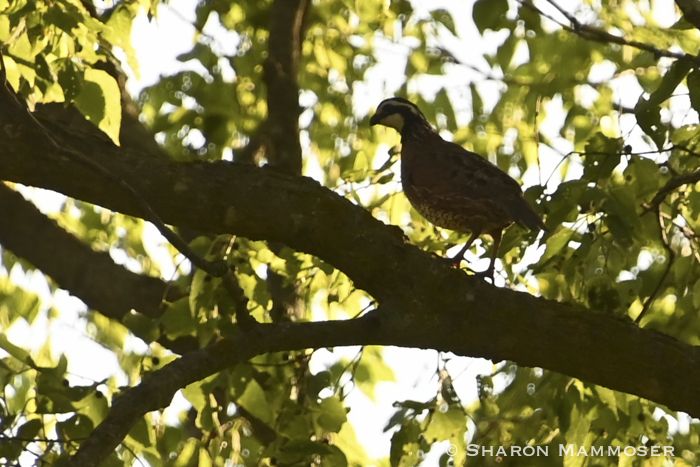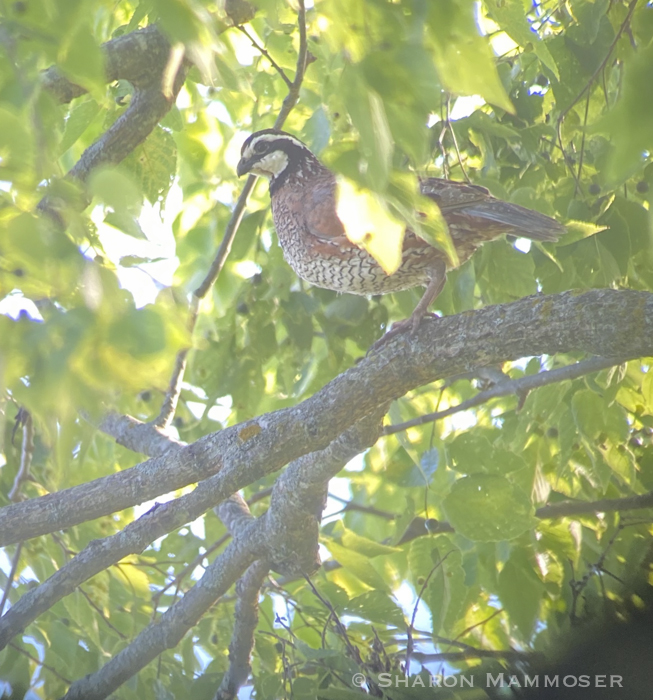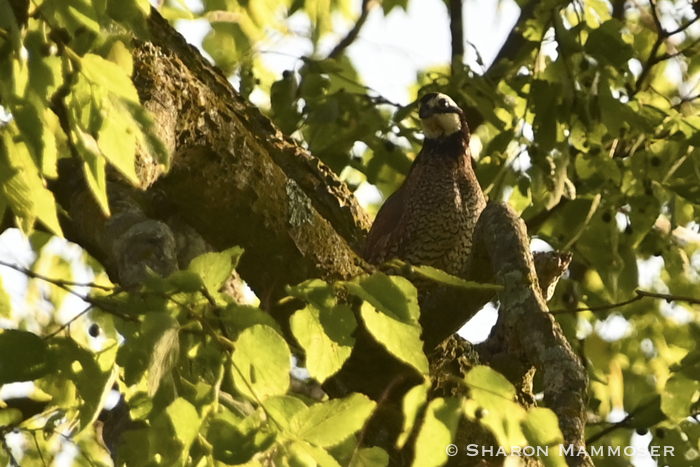Note: I published this post last Saturday but noticed it had the wrong number, so am republishing it. Sorry for the confusion.
Did you recognize the interesting bird song as that from a Northern Bobwhite, Colinus virginianus? Like the Catbird, this is one of those birds who got its name from what it says rather than how it looks, whistling two, sharp notes “bob-white” that carry a long distance. Most of the time you will only hear the Bobwhite, not see him because of his excellent camouflage and habit of sticking near the ground in the tall grasses.

The Northern Bobwhite is in the quail family, sometimes referred to as “nature’s little chickens.” They do everything on the ground–feeding, nesting and roosting. I was shocked when as I was listening to a pair of Bobwhites calling back and forth, suddenly one flew out from the field and up into a lone tree in front of me, likely to get a better view and determine what level of danger I presented. To my delight, the Bobwhite stayed in the tree for a while, calling loudly from his elevated perch while I captured his portrait for this post.

Despite their name suggesting otherwise, Northern Bobwhites can be found throughout much of the United States, from southern New England and the southern Great Lakes west to Colorado, South Dakota and Texas, south to Central America. They are social birds, gathering in what’s called a covey, with 10-16 birds. At night they form a circle at night, with their heads all pointing out, bunched together for warmth and protection from predators.

According to Cornell Lab of Ornithology, “Northern Bobwhites were once a common species in eastern North America, but experienced widespread, sharp declines between 1966 to 2014, up to 4% per year, resulting in a cumulative decline of 85%, according to the North American Breeding Bird Survey… The bobwhite’s decline probably results from habitat degradation and loss owing to urbanization, fire suppression, and changes to agriculture and forestry. Agricultural fields have become less suitable for bobwhites with higher levels of pesticides and herbicides yielding less insect and plant food, and fewer hedgerows to provide cover. Although forest-clearing can increase bobwhite numbers in the short term, it can also lower them in the long term if forests don’t regenerate. Some landscapes, when managed with prescribed fire, grazing, or other controlled disturbances, can produce high bobwhite densities, and hunting plantations in the Southeast have long done this.”
Bobwhites do not migrate and so in the northernmost part of their range, if severe weather lasts a long time, can affect populations greatly. Most Bobwhites in the wild live less than 6 months, though they can live for up to 6 years. They are eaten by many birds of prey including, Great Horned and Barred owls, Cooper’s and Sharp-shinned hawks, and Northern Harriers. Snakes, foxes, domestic cats, bobcats, coyotes, raccoons, opossums, weasels, blue jays, and crows prey on eggs and young.
I hope your travels allow you to see, or hear, one of these handsome birds.
For this week’s puzzler I have chosen another super camouflaged bird that I photographed on my recent trip to Colorado. Weekly Puzzler #220 is a video puzzler--See if you recognize it.

